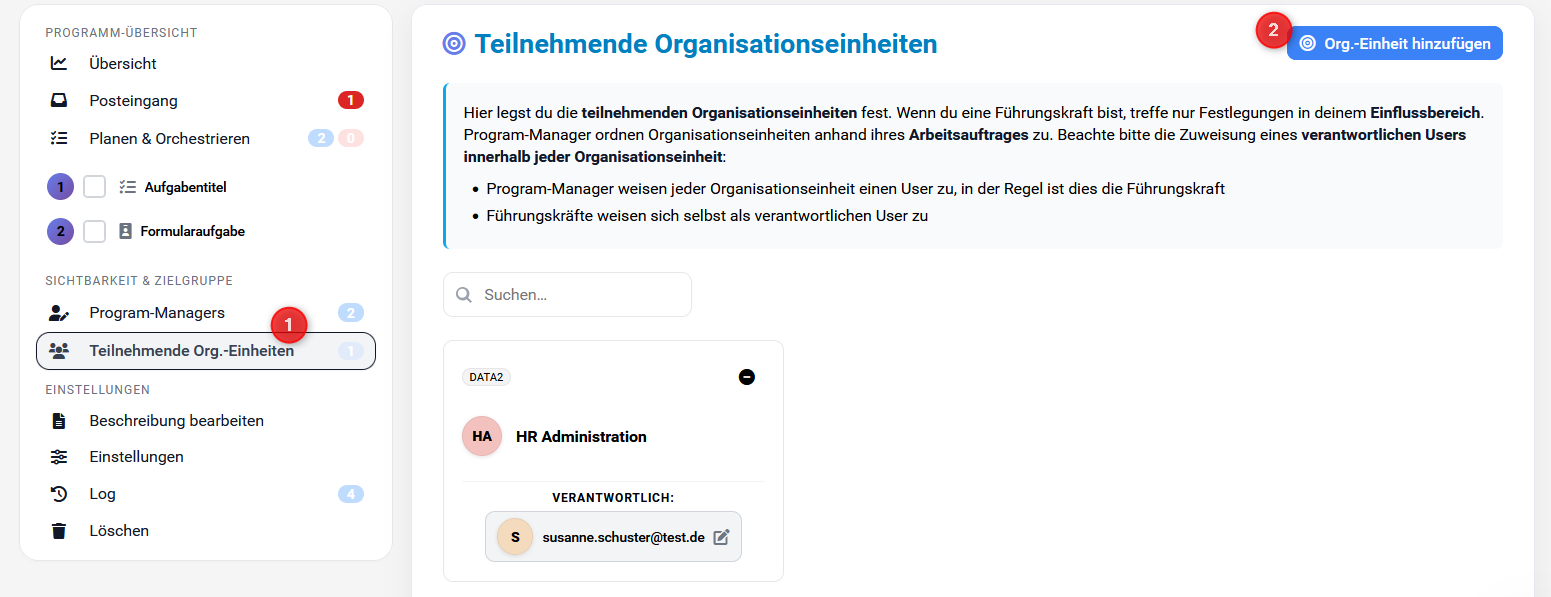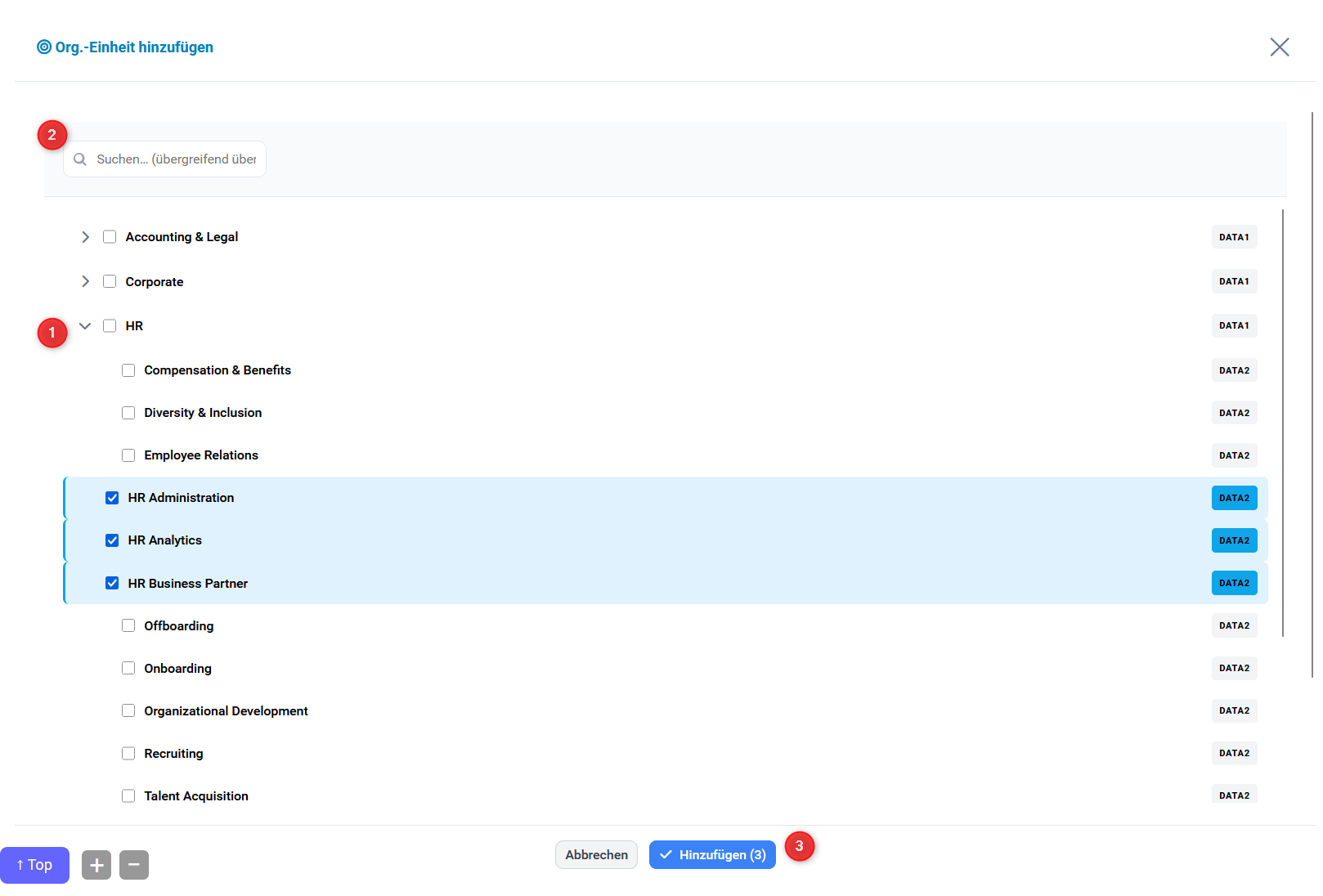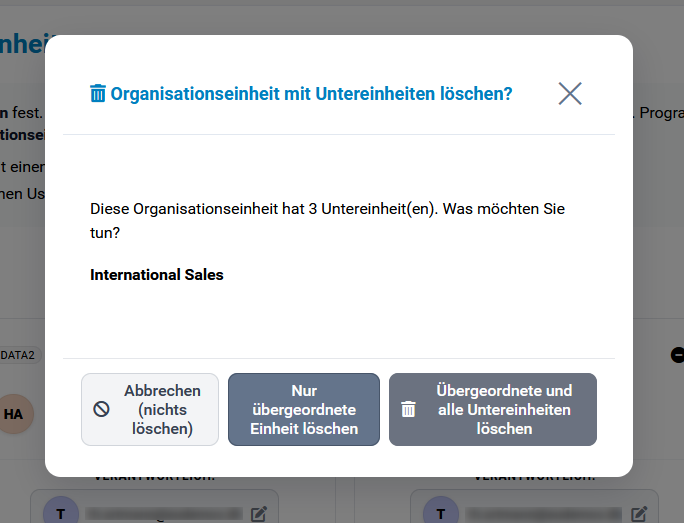What are Participating Org. Units?
Participating organizational units are departments, teams, or areas that are involved in a program or checklist.
Important for Audits: This is where the crucial link between measures and departments takes place for audits. Therefore, every program is only "officially" effective when it is assigned to corresponding organizational units.
Significance for Program Effectiveness
Official Assignment Required
Programs and checklists only become officially effective through assignment to organizational units. This assignment is essential for:
- Audit Compliance: Traceable connection between measures and responsible departments
- Responsibilities: Clear responsibilities for program parts
- Traceability: Documentation of which areas were involved in which measures
- Reporting: Structured evaluation by organizational units
User-Based Assignment
Since the portal functions on a user basis, at least one user must always be assigned for each organizational unit. This user:
- Represents the organizational unit in the program
- Can process tasks for their unit
- Receives notifications and communication
- Documents the activities of their department
Which Units to Include for Audit Relevance?
A common uncertainty: Who do I need to include for it to be audit-relevant? The answer depends on your assignment logic:
Case 1: Decentralized Processing (Delegation to Teams) You as department head want each team leader to process the tasks themselves:
- ✅ Add all 4 teams from your department
- ✅ Each team gets the program assigned
- ✅ Each team leader processes independently
- ✅ Audit Evidence: All teams are documented as executing units
Case 2: Centralized Processing (Department Head Takes Over) You as department head want to process the program yourself, without team leaders seeing it:
- ✅ Add only your department (not the sub-teams)
- ✅ You process on behalf of all teams
- ✅ Teams don't see the program
- ✅ Audit Evidence: Your department is documented as responsible unit. The program still applies to teams.
Ask yourself: Who should actually process the tasks? These persons/teams must be added as organizational units. For audits, it's important that the executing units are documented, not necessarily all hierarchical levels.
Managing Organizational Units (Program Managers)
1) Access to Management

As a Program Manager, you have access to managing participating units:
-
- Access in Sidebar: The function is only visible and accessible to program managers
-
- Add New Org. Unit: Use this button to add more organizational units to the program
2) Browsing Organizational Structure

The system opens a hierarchical directory tree of your organization:
-
- Flexible Selection: You can select entire departments (then all subgroups are automatically added) or only target specific departments
-
- Targeted Search: Search function for organizational units for quick finding of specific areas
Selection Options in Detail
Select Parent Elements Individually:

You can specifically select parent organizational units (parent elements) individually, without automatically adding all subgroups. This is ideal when:
- Only the management level should process the program
- Subgroups should receive separate programs
- You want to add further units step by step
Parent Elements with All Sub-Elements:

Alternatively, you can select parent elements including all subgroups (sub-elements). The system then automatically adds all hierarchically subordinate units. This is practical when:
- The entire departmental structure should participate
- All levels should work equally
- You need complete organizational coverage
- Case 1 (Decentralized Processing): Use "Parent with sub-elements" to automatically include all teams
- Case 2 (Centralized Processing): Use "Parent individually" to add only the department level without teams
3) Removing Units and Dependencies

When removing organizational units, the system offers intelligent options:
If you have added a department with e.g. 3 teams and want to delete the department, you will be asked whether you want to delete the teams as well or not. This enables precise control over the program structure.
Special Features in Running Programs
In published, running programs, organizational units can be added but not deleted. To remove units, a program must be briefly "unpublished".
The assignment of organizational units is not only organizationally but also legally relevant for audit and compliance purposes. Changes should therefore be carefully planned and documented.